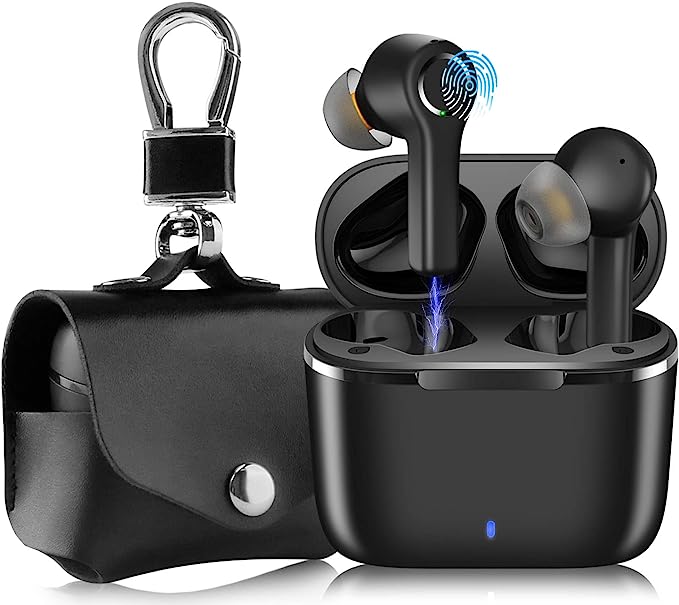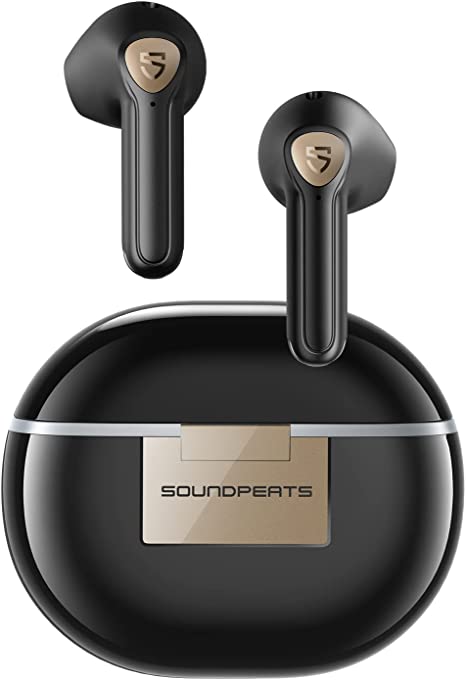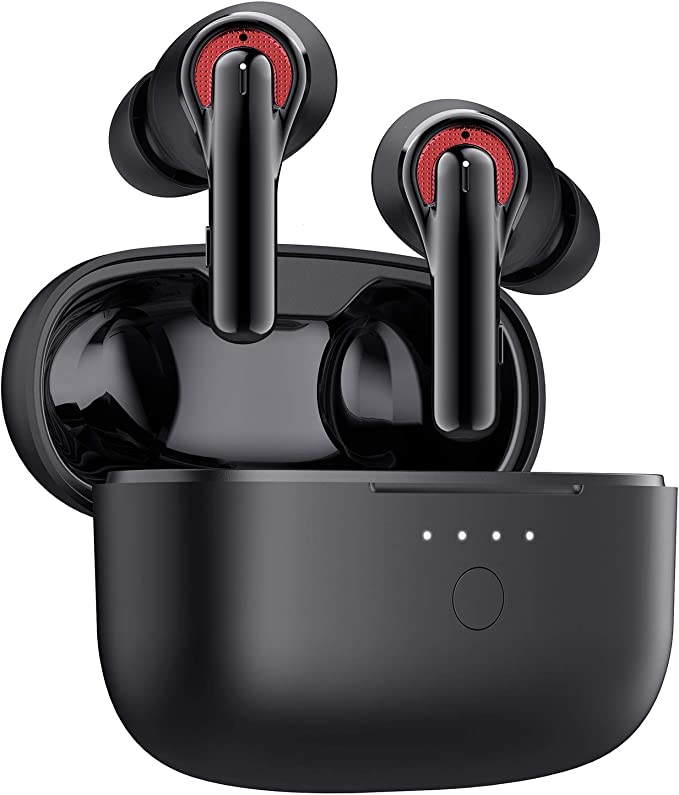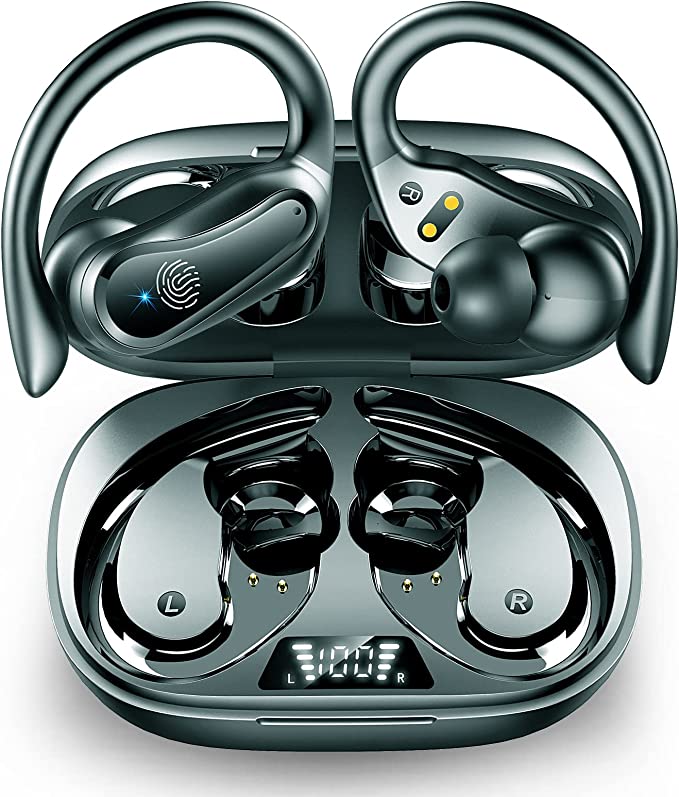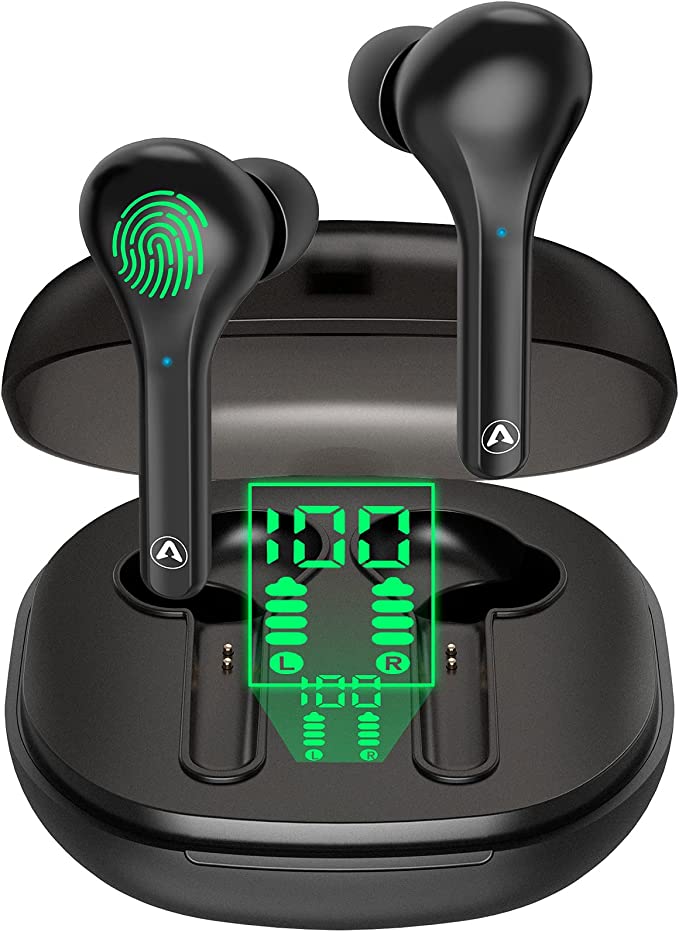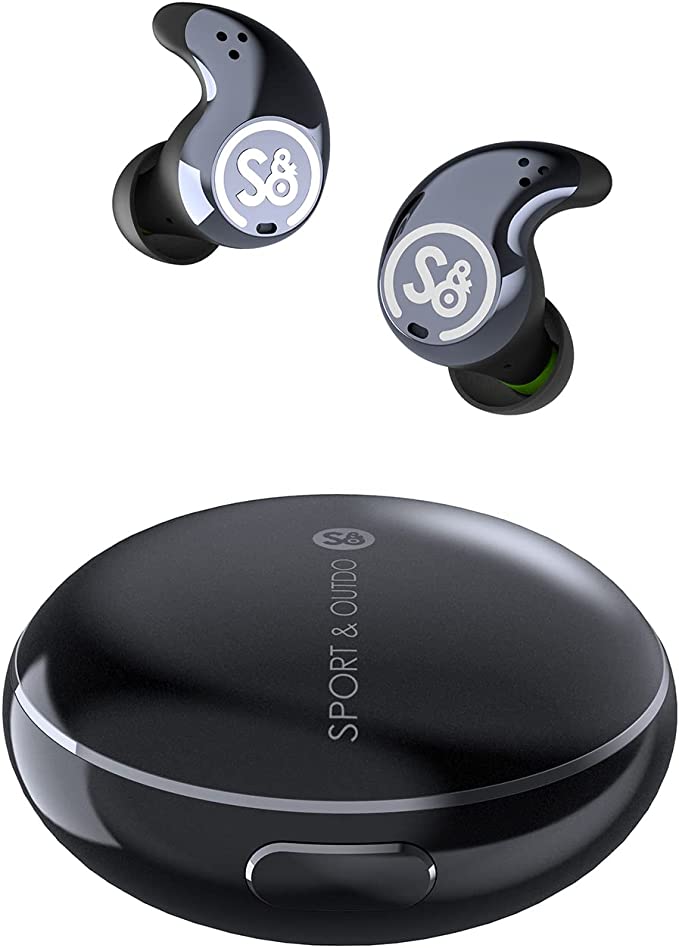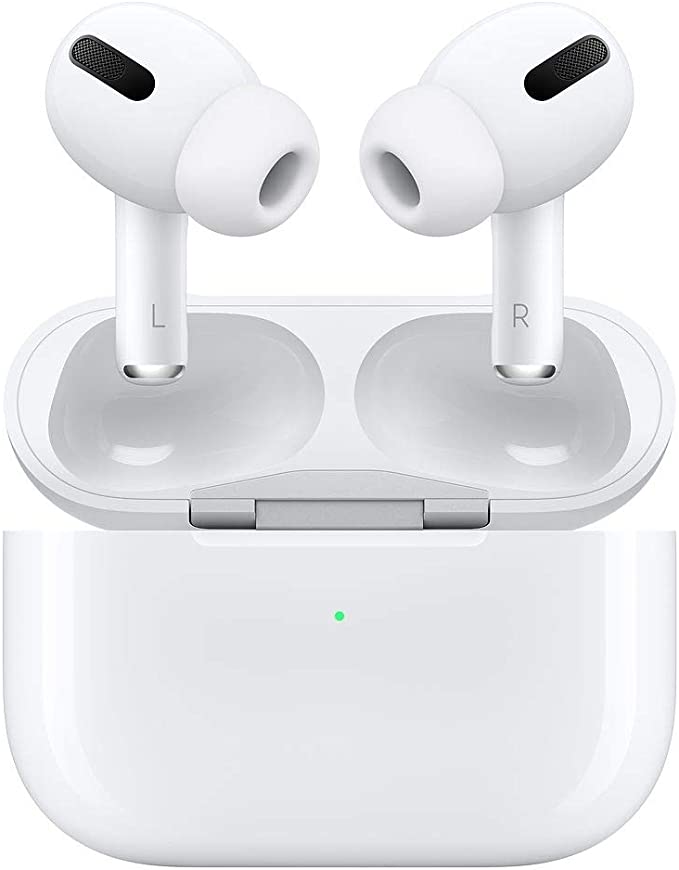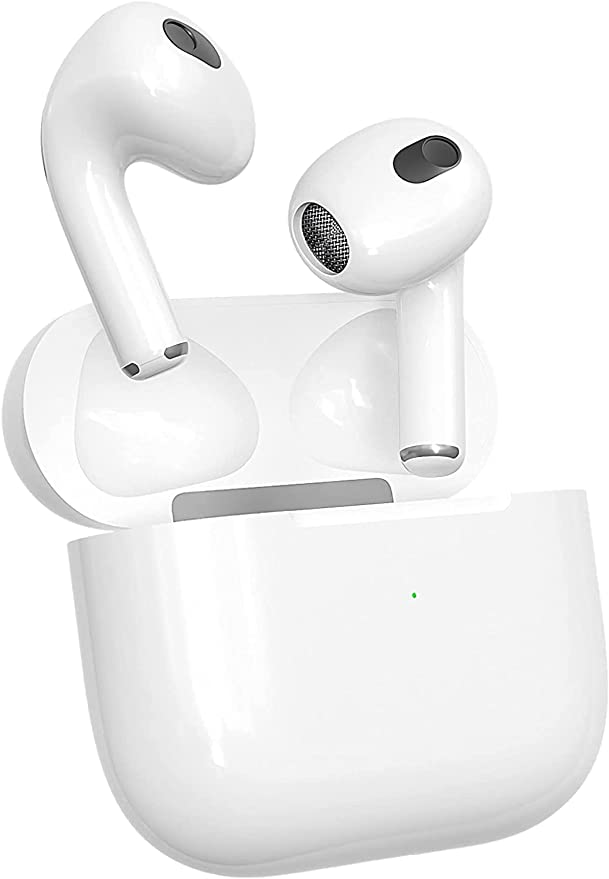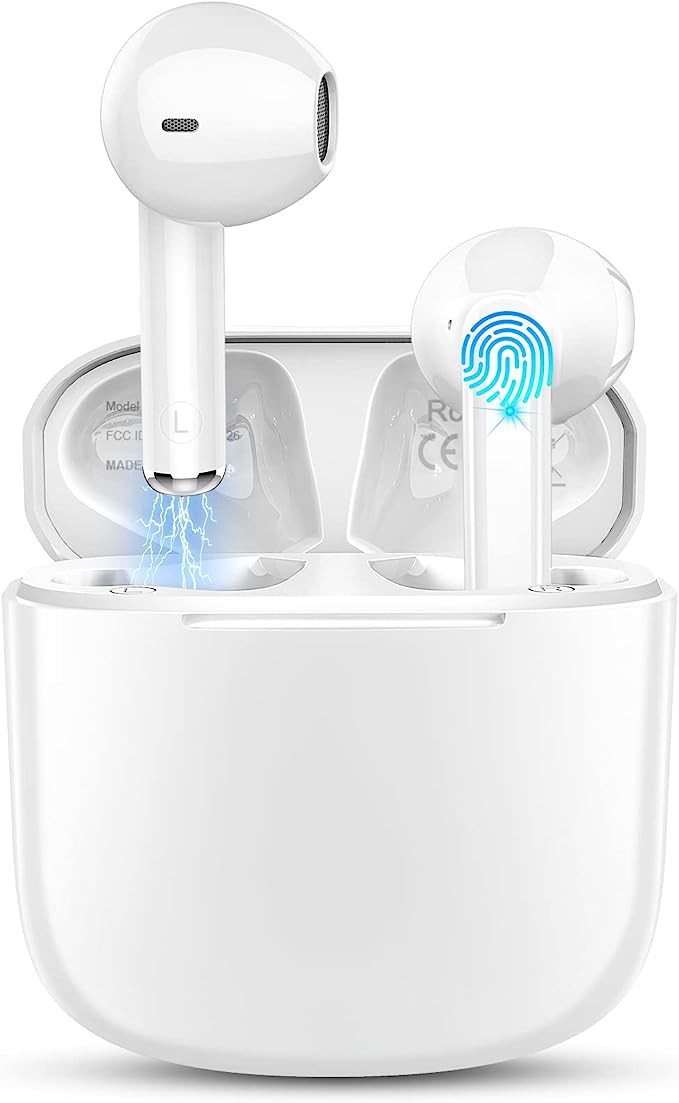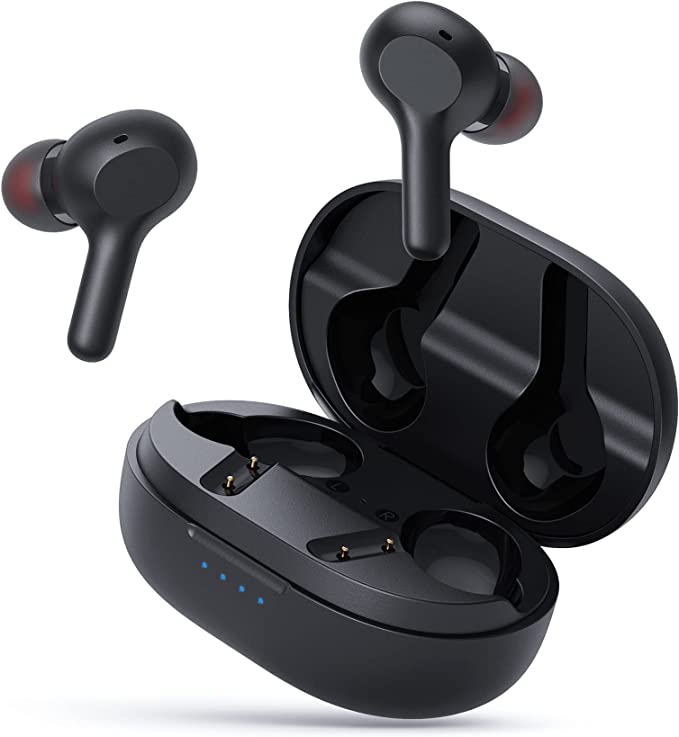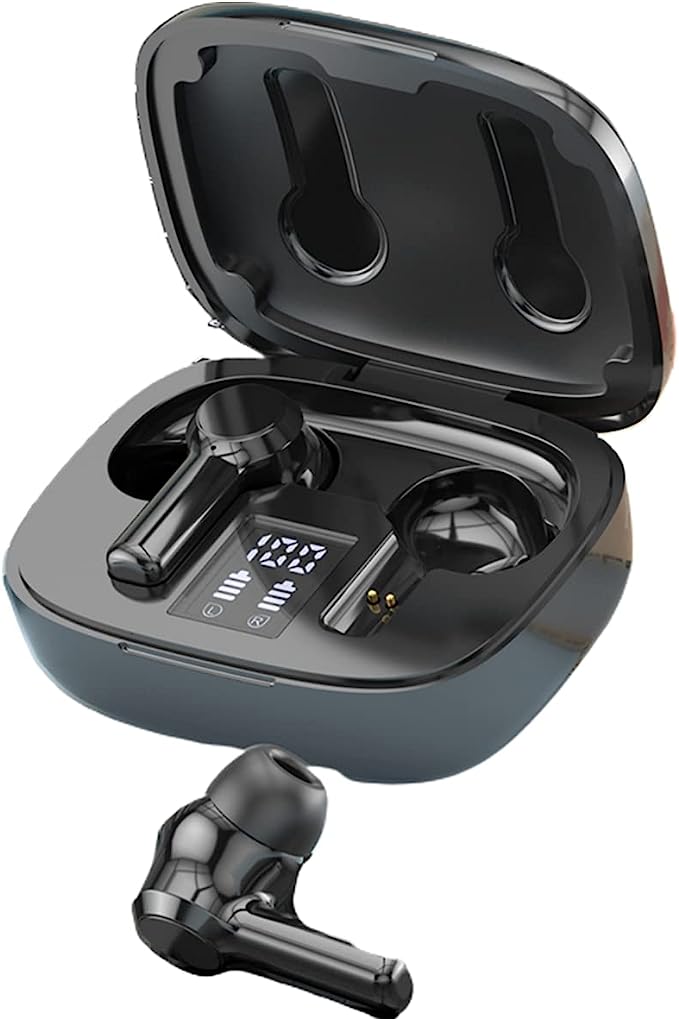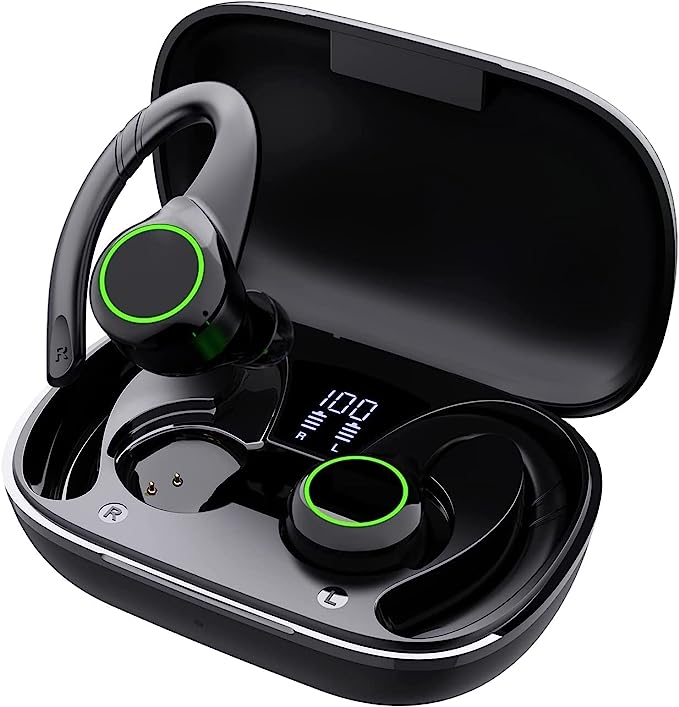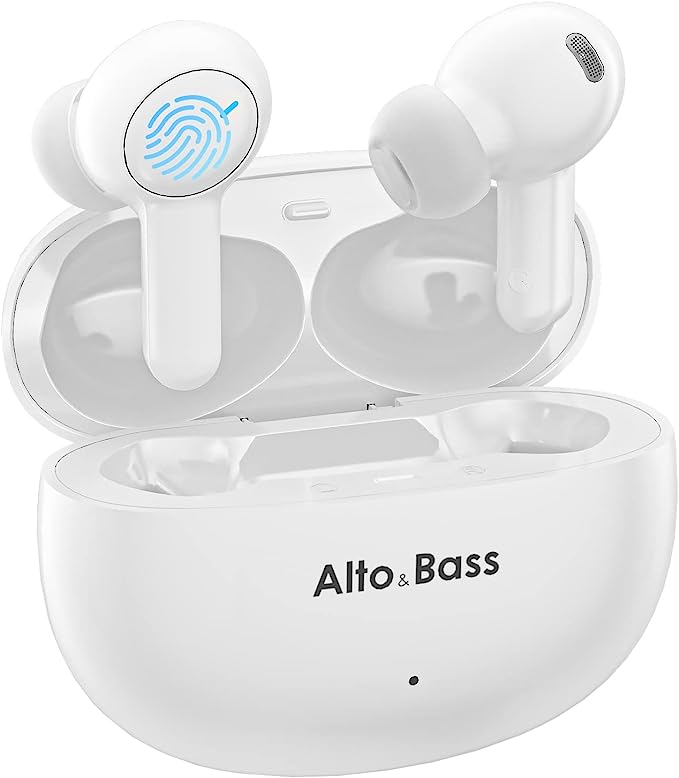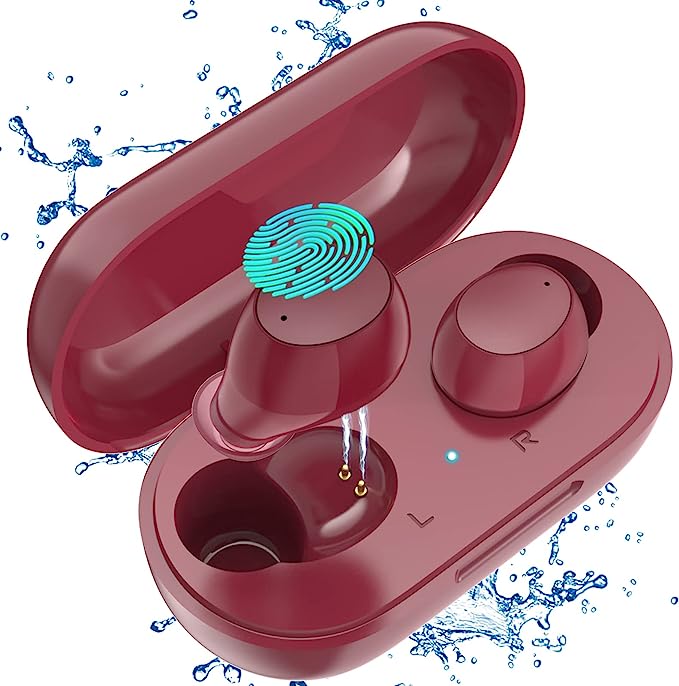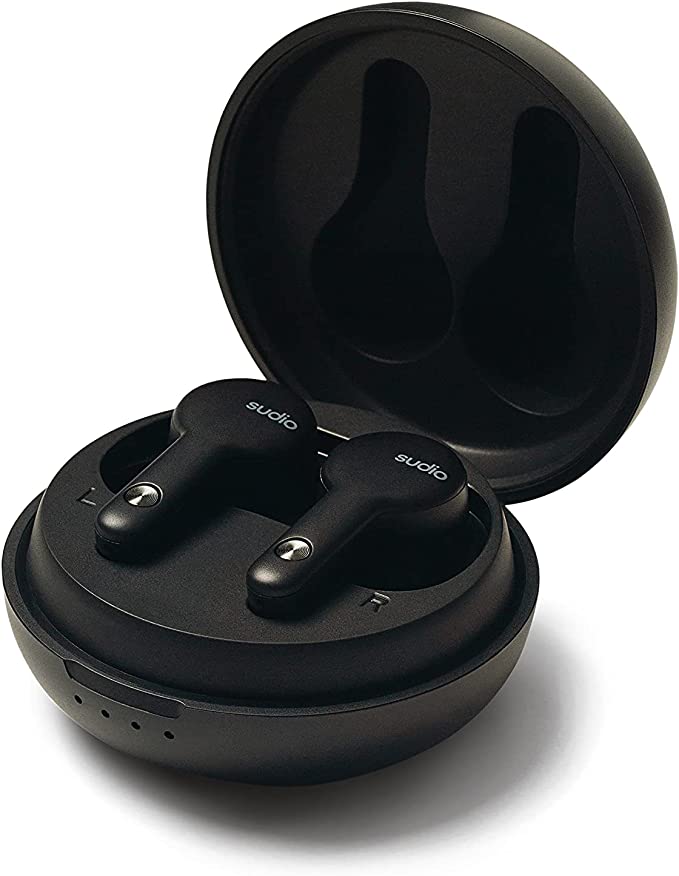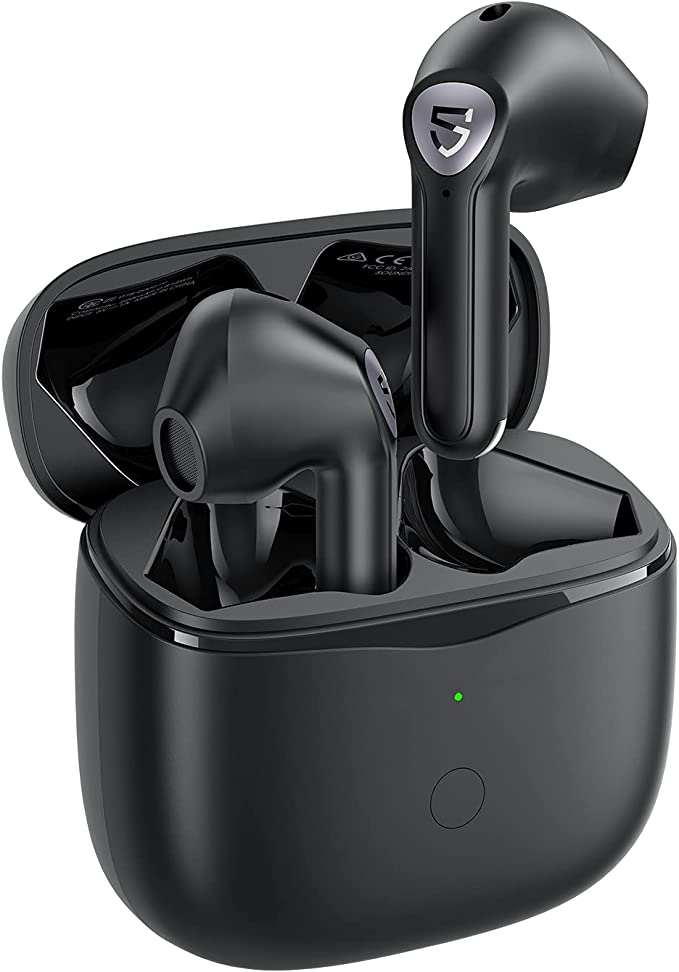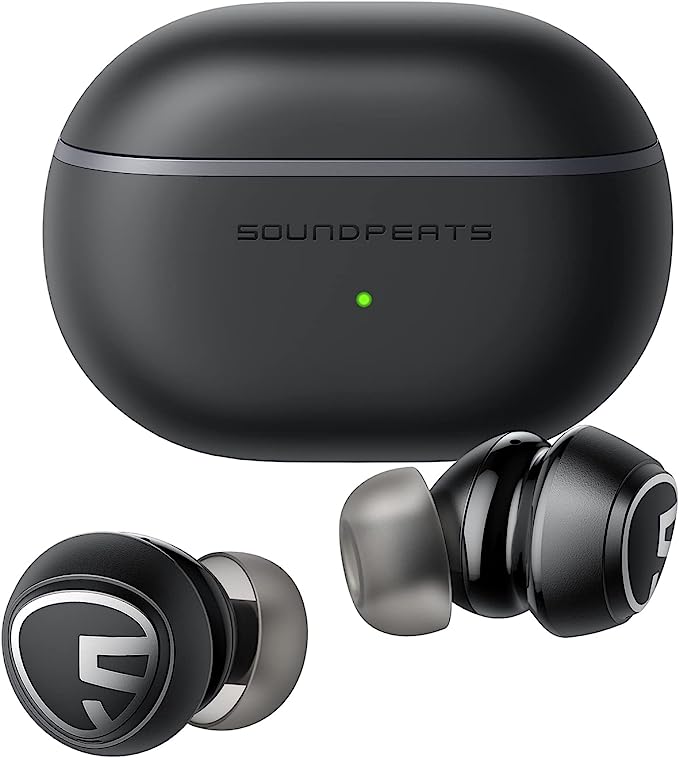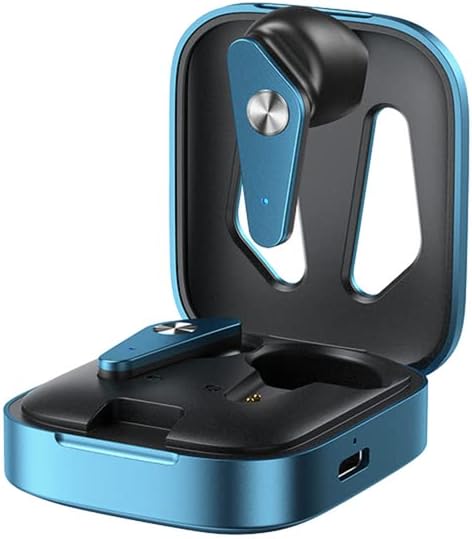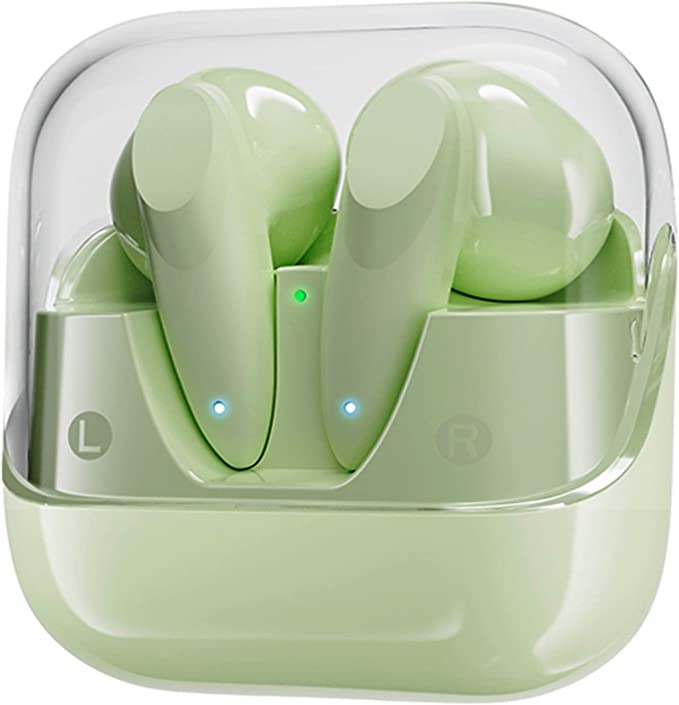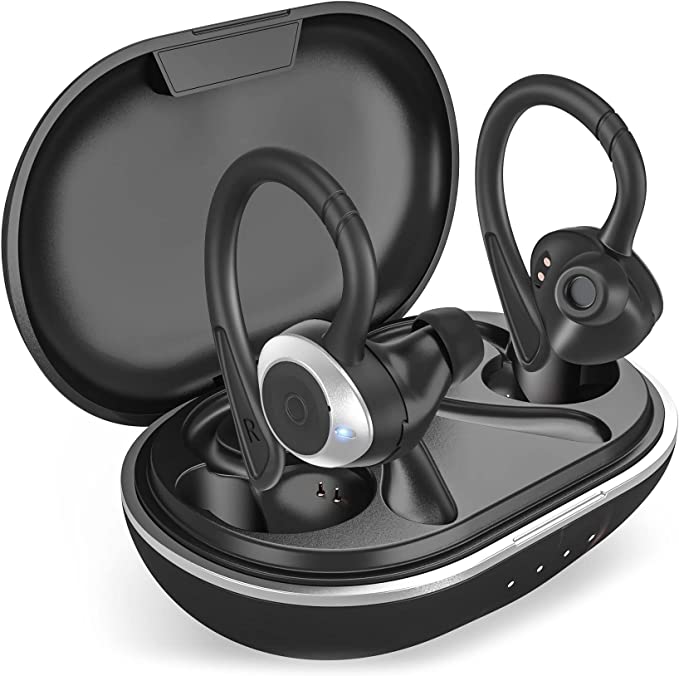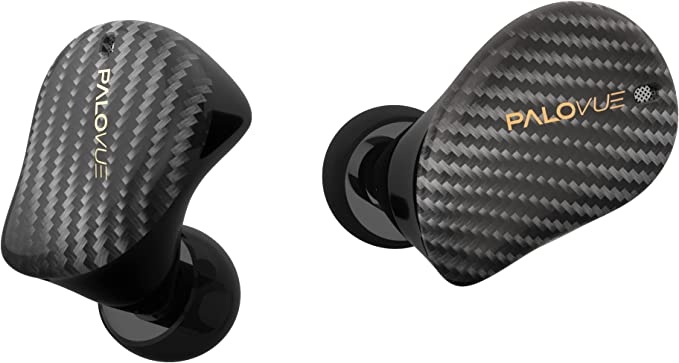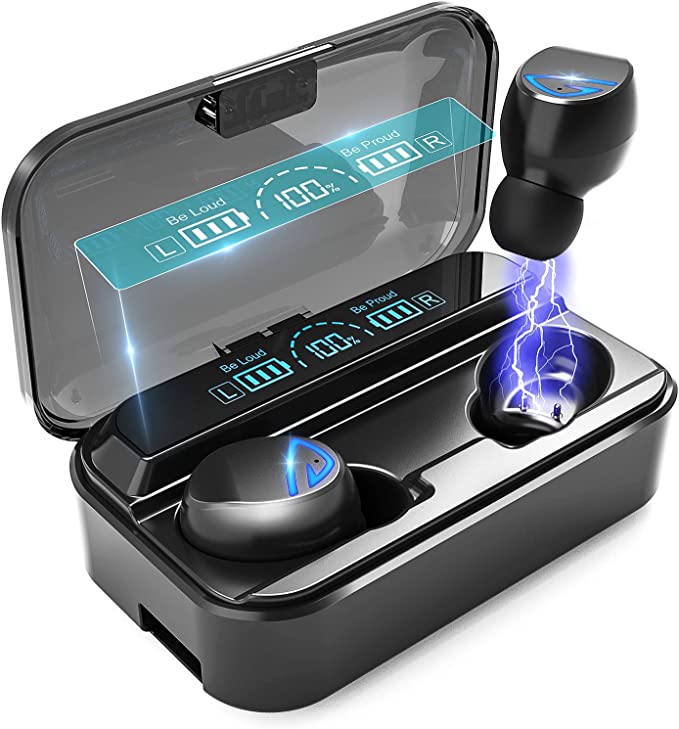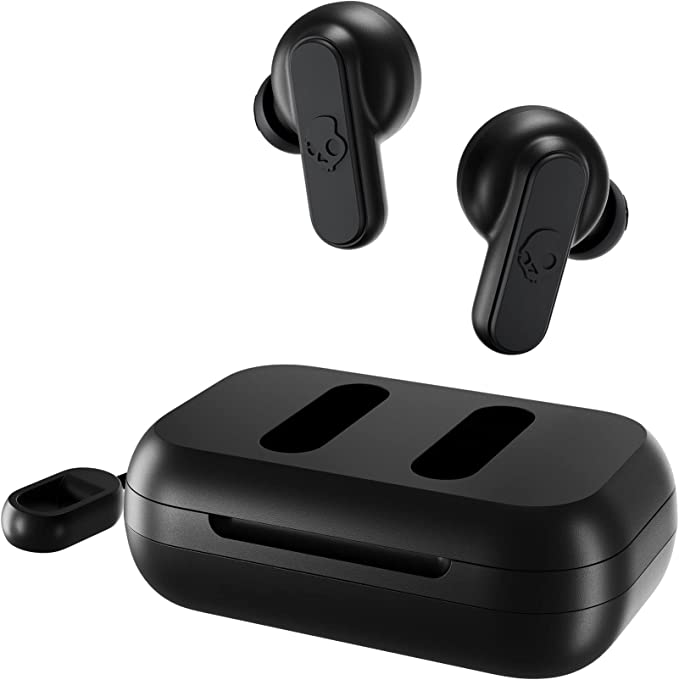Asyin JXH J3 PRO Wireless Earbuds: Decoding Budget-Friendly Audio Tech & True Wireless Freedom
Update on May 30, 2025, 4:56 p.m.
The world of audio has irrevocably shifted. Wires, once a symbol of connection, now often represent a tether to be severed. True wireless earbuds have exploded onto the scene, transitioning from a niche luxury to an everyday accessory for many. Yet, this boom has created a dizzying marketplace, especially at the budget-friendly end, where flashy claims can easily obscure genuine value. Amidst this bustling arena stands the Asyin JXH J3 PRO, a contender promising a suite of modern features – Bluetooth 5.2, Environmental Noise Cancellation (ENC), IPX7 waterproofing, and extended playtime – all at a price point that invites a closer look.
But what truly lies beneath the surface of such an accessible offering? Our journey today is not just a review, but an exploration. We aim to peek under the hood of the Asyin JXH J3 PRO, to decode the technology that powers its promises, and to understand how these scientific and engineering choices translate into the everyday user experience. Can genuinely useful audio science be this affordable? Let’s find out.

First Impressions & Design Philosophy: Comfort Meets Functionality
While we don’t have the physical product to unbox, the provided descriptions and user feedback allow us to construct a likely first impression. The Asyin JXH J3 PRO, available in classic black and clean white, appears to follow the now-familiar stem-style design, a form factor favored for its microphone placement and weight distribution. The emphasis on “soft and elastic ear tips” and an ergonomic fit points to a core understanding: if an earbud isn’t comfortable, its technological prowess matters little. Budget earbuds often cut corners on materials or nuanced ergonomic research, so the inclusion of multiple ear tip sizes is a crucial, if standard, acknowledgment of diverse ear canal shapes. The goal is a stable, comfortable fit that not only stays put during a morning commute or a light workout but also contributes to passive noise isolation – the first line of defense against unwanted sound.
The charging case, an indispensable partner to any true wireless experience, is described as portable. For the JXH J3 PRO, it houses the earbuds and extends their life significantly. Details like magnetic seating for the earbuds ensure they align correctly for charging, a small but vital detail for user convenience. LED indicators on the case, a common feature, provide at-a-glance information about the remaining charge, preventing the unwelcome surprise of a dead battery. While the aesthetics are generally minimalist, the true test of the design lies in its daily usability – how easily the case slips into a pocket, how robust the hinge feels, and how effortlessly the earbuds can be retrieved and stowed.

The Unseen Handshake: Bluetooth 5.2 and Stable Connectivity
At the heart of any wireless earbud is its Bluetooth technology. The Asyin JXH J3 PRO boasts Bluetooth 5.2, a significant specification that promises more than just a version number upgrade. To understand this better, taking a quick look at the evolution of Bluetooth is helpful. Early Bluetooth versions were often troubled by signal dropouts, a limited range, and higher power consumption. Each new version has aimed to enhance these aspects, and Bluetooth 5.0 represented a significant advancement in terms of range and data transfer capabilities.
So, what does Bluetooth 5.2 bring to the table specifically?
1. Enhanced Power Control (LE Power Control): This feature allows devices to dynamically optimize transmitter power, which can improve connection stability and reduce interference, all while potentially conserving battery life on both the earbuds and the connected device.
2. Improved Audio Streaming (LE Isochronous Channels): While the JXH J3 PRO may or may not implement the full LC3 codec (a new high-quality, low-power audio codec that is a part of the Bluetooth 5.2 specification but not mandatory for all 5.2 devices), the underlying architecture of Bluetooth 5.2 is designed to support more robust and efficient audio streaming. This can translate to fewer audio glitches and better synchronization, especially in congested wireless environments.
3. Faster Connections & Lower Latency (Potentially): Generally, newer Bluetooth versions aim to establish connections more quickly and can offer lower latency, which is the delay between when an audio signal is sent by your phone and when you hear it in your earbuds. This is particularly important for watching videos or playing games, where audio-visual sync is critical.
For the Asyin JXH J3 PRO user, these technical underpinnings translate into tangible benefits. A more stable connection means fewer frustrating dropouts when your phone is in your pocket or across the room (within reasonable limits, of course). Better power efficiency contributes to the claimed long battery life. And while the product description doesn’t specify latency figures, the use of Bluetooth 5.2 lays a foundation for a smoother, more synchronized audio experience compared to older Bluetooth versions.
It’s important to remember, however, that real-world Bluetooth performance is also affected by environmental factors (like Wi-Fi interference, microwaves, physical obstructions) and the quality of the Bluetooth implementation in both the earbuds and the source device. But starting with a robust standard like Bluetooth 5.2 certainly sets the JXH J3 PRO on the right path.
Clearer Conversations: The Science of ENC (Environmental Noise Cancellation)
In our increasingly mobile and often noisy world, call clarity is paramount. The Asyin JXH J3 PRO highlights “ENC Noise Cancelling,” which stands for Environmental Noise Cancellation. It’s crucial to distinguish this from Active Noise Cancellation (ANC) that many associate with premium headphones for immersive music listening.
ENC’s primary mission is to enhance voice clarity for the person on the other end of your call. It focuses on cleaning up the audio picked up by the earbuds’ microphones before it’s transmitted. Here’s a simplified look at how it generally works, often involving a dual-microphone system as mentioned for the JXH J3 PRO:
- Voice Pickup: One microphone is typically positioned closer to the user’s mouth to capture their voice more directly.
- Ambient Noise Detection: A second microphone (or more) is oriented to pick up more of the surrounding environmental sounds – traffic, chatter, wind, etc.
- Intelligent Processing: This is where the “brains” of ENC come in. Sophisticated algorithms analyze the signals from both microphones. By comparing the two, the system can differentiate between the user’s voice and the unwanted background noise.
- Noise Suppression: The identified noise is then actively reduced or filtered out from the audio signal that is sent to the listener. This doesn’t mean all noise vanishes, but it should be significantly attenuated, allowing the user’s voice to come through more clearly.
The product description mentions “Enc’s sensors actively detect and reduce environmental noise / the dual microphone system helps effectively reduce outdoor wind noise, make calls clearer.” This aligns with the typical function of ENC. The claim of reducing outdoor wind noise is a common target for such systems, as wind can be particularly disruptive to microphone performance.
For the Asyin JXH J3 PRO user, this means that when you’re making a call while walking down a busy street or in a moderately noisy café, the ENC system should help ensure your voice is more intelligible to your caller. It’s about making your outgoing audio cleaner.
However, it’s important to manage expectations. ENC in budget-friendly earbuds, while beneficial, may not offer the same level of noise suppression as the advanced multi-microphone arrays and powerful processors found in high-end communication headsets or premium earbuds that also feature sophisticated ANC for the listener. The effectiveness can vary depending on the type and loudness of the ambient noise. Nevertheless, the inclusion of ENC is a valuable feature at this price point, directly addressing a common pain point in mobile communication.

The Heart of the Music: 13mm Dynamic Drivers and Sound Quality
Beyond calls and connectivity, the soul of any earbud lies in its ability to reproduce music. The Asyin JXH J3 PRO features “13mm eardrum” – more accurately termed 13mm dynamic drivers. This specification gives us a clue about its sonic potential.
Let’s break down what this means: * Dynamic Driver: This is the most common type of driver found in headphones and earbuds. It works on a principle similar to a traditional loudspeaker. It consists of a diaphragm (a thin membrane), a voice coil attached to it, and a magnet. When an audio signal (electrical current) passes through the voice coil, it creates a magnetic field that interacts with the permanent magnet, causing the voice coil and the attached diaphragm to vibrate. These vibrations move the air, creating the sound waves we hear. * 13mm Diameter: This refers to the diameter of the diaphragm. In the world of earbud drivers, 13mm is considered relatively large. Typical sizes can range from 6mm to over 10mm.
What impact does a larger driver size, like 13mm, generally have on sound?
1. Bass Response: Larger diaphragms can typically move more air. This physical advantage often translates to a better ability to reproduce lower frequencies, meaning potentially deeper, more impactful bass. This is often a sought-after quality for genres like pop, electronic, and hip-hop.
2. Fullness and Soundstage (Potentially): A larger driver can contribute to a fuller sound and a more open, spacious perceived soundstage (the sense of where instruments are located around you). However, this is heavily influenced by many other factors, including the driver material, magnet strength, acoustic design of the earbud housing, and the tuning of the earbud.
3. Efficiency and Distortion: Larger drivers might be more efficient (produce more sound output for a given amount of power), but if not well-engineered, they can also be prone to distortion at higher volumes or might struggle with speed and accuracy in reproducing complex musical passages.
The product description states these earbuds deliver “impressive powerful bass and ultra clear sound. Designed for music lovers.” User reviews on the product page frequently mention “sound quality” as a positive, often with the qualifier “great for the price.” Some users found the sound “an IMMENSE improvement from the Apple version” (referring to older, non-Pro AirPods, presumably). This suggests that the 13mm drivers are indeed making a noticeable impact, likely providing a robust low-end and a generally pleasing sound signature for everyday listening.
However, it’s crucial to contextualize this within its price bracket. While a 13mm driver offers good physical potential, achieving true audiophile-grade clarity, neutrality, and detail retrieval requires high-quality materials, precision engineering, and meticulous tuning – aspects that are typically the domain of more expensive audio gear. For the Asyin JXH J3 PRO, the aim is likely a V-shaped or U-shaped sound signature (emphasized bass and treble, slightly recessed midrange) which is popular for general consumers and can sound engaging and “fun,” especially with contemporary music. The “ultra clear sound” claim should be interpreted as clarity sufficient for enjoyable listening in its class, rather than analytical precision.

Ready for Real Life: IPX7 Waterproofing Explained
For many, earbuds are companions for workouts, commutes in unpredictable weather, or just everyday life where accidents happen. The Asyin JXH J3 PRO comes with an IPX7 waterproof rating, a significant feature that offers peace of mind.
Let’s decode this rating: * IP: Stands for “Ingress Protection” (or International Protection Marking). It’s a standard defined by the International Electrotechnical Commission (IEC 60529). * X: The first digit after IP refers to protection against solid particles (like dust). An ‘X’ here means the device has not been officially rated for dust protection, or the manufacturer has chosen not to declare it. This doesn’t necessarily mean it has no dust protection, just that it’s not certified for a specific level. * 7: The second digit refers to protection against liquids. A ‘7’ is a high level of water protection. Specifically, IPX7 means the device can withstand submersion in water up to 1 meter (or about 3.3 feet) deep for a maximum of 30 minutes.
What does this mean in practical terms for the JXH J3 PRO user? * Sweat-Proof Workouts: You can confidently wear these earbuds during intense workouts without worrying about sweat damaging them. This is a major plus for gym-goers, runners, and cyclists. * Rainy Day Resilience: Getting caught in the rain with these earbuds in shouldn’t be a cause for panic. They are designed to handle raindrops and splashes. * Accidental Spills or Quick Dips: If you accidentally drop an earbud in a puddle or a sink full of water and retrieve it quickly, it should survive, provided the exposure doesn’t exceed the 1-meter/30-minute limit.
The product description notes, “With hermetically sealed outer shell and waterproof nano-coating materials to protect against water splashes, heavy sweating or raindrops.” This suggests a combination of physical sealing and material treatment to achieve the IPX7 rating.
However, there are important caveats with any IP rating: * Not for Swimming: IPX7 does not mean the earbuds are suitable for swimming. The pressure of moving through water, especially at depth, can exceed what the seals are designed for. Also, Bluetooth signals do not travel well underwater. * Wear and Tear: The waterproof seals can degrade over time due to wear, exposure to chemicals (like those in soaps or lotions), or extreme temperatures. * Charging Case is Likely Not Waterproof: Typically, the IP rating applies only to the earbuds themselves, not the charging case. It’s crucial to ensure the earbuds are completely dry before placing them back in the case to charge, to avoid damaging the case or the charging contacts. * Saltwater/Chemicals: The IPX7 test is usually conducted with fresh water. Saltwater or other liquids (like sugary drinks) can be more corrosive and damaging.
Despite these limitations, an IPX7 rating is a robust feature for earbuds in this price category, significantly enhancing their durability and versatility for active users and everyday mishaps.

Powering Your Day (and More): Battery Life and Charging
One of the most critical factors for true wireless earbuds is battery life. Constantly needing to recharge can quickly turn convenience into a chore. The Asyin JXH J3 PRO offers encouraging figures: “A single wireless earphone can work up to 4-6 hours on a single charge. the portable charging box can charge the headphones 4-5 times to extend 35h playtime.”
Let’s analyze these numbers: * Earbud Playtime (4-6 hours): This is a respectable range for a single charge. The variation (4 to 6 hours) likely depends on factors like listening volume (higher volume consumes more power), the type of content being played (complex audio might require more processing), and even the strength of the Bluetooth connection. For most users, this duration should cover a typical workout, a few hours of focused work, or a daily commute. * Charging Case Capacity (4-5 additional charges): This is where the “marathon listening” aspect comes in. If the earbuds offer, say, an average of 5 hours per charge, and the case provides 4 additional full charges, that’s 5 hours (initial) + (4 charges * 5 hours/charge) = 25 hours. If it’s 5 charges, it’s 30 hours. The claim of “35h playtime” suggests either a slightly longer average earbud playtime or a case capacity closer to the higher end of the 4-5 charge estimate, or perhaps a combination. For instance, 5 hours per charge with 6 additional charges from the case would yield 35 hours. Or 6 hours per charge and nearly 5 full recharges (4.83 to be exact) from the case. Regardless of the precise calculation, it means you can go for several days, or even a week for lighter users, without needing to plug the case into a power source. * Total Playtime (up to 35 hours): This aggregate figure is a strong selling point, minimizing “battery anxiety.” It’s suitable for extended trips or for users who don’t want to be tethered to a charger frequently.
The product page also states “We are always committed to technological innovation to meet your need for long battery life.” While a general statement, it underscores the importance placed on this feature. User reviews often corroborate good battery performance, with one reviewer noting a previous pair lasted almost 3 years before needing a repurchase, which, while anecdotal, speaks to decent longevity if the battery chemistry holds up.
The inclusion of a USB-C port for charging the case is another modern convenience. USB-C is becoming the universal standard, meaning you likely already have cables and chargers that will work, reducing cable clutter. The charging time for the case itself or for a full earbud recharge within the case isn’t specified in the provided material, but these are typically in the range of 1-2 hours for the case and perhaps 1 hour for the earbuds.
Good battery life is a cornerstone of the true wireless experience, and the Asyin JXH J3 PRO appears to deliver well in this regard, making them a reliable companion for extended use.
At Your Fingertips: Navigating with Smart Touch Controls
Modern earbuds, including the Asyin JXH J3 PRO, have largely moved away from physical buttons in favor of “intuitive touch controls.” These offer a sleeker aesthetic and the potential for a wider range of commands without fumbling for tiny buttons. The product description mentions you can “easily adjust the volume, skip songs, answer calls or activate the voice assistant” using these controls.
How do touch controls generally work on earbuds? * Capacitive Sensing: Most use capacitive touch sensors, similar to smartphone screens. These sensors detect the change in capacitance caused by the touch of a finger. The earbud’s internal processor then interprets different types of touches (taps, double-taps, triple-taps, long presses) as specific commands.
The appeal of touch controls is clear: * Seamless Design: No protruding buttons mean a cleaner look. * Ease of Access: Commands can often be executed without needing to take out your phone. * Versatility: A single touch surface can be programmed for multiple functions.
However, touch controls can also be a “double-edged sword,” especially in budget-friendly implementations. The user review section for the Asyin JXH J3 PRO provides direct insight here. One user states, “the touch feature is too sensitive—when I push the earbuds in, no matter where I grip, it seems to affect the controls.” Another complains, “The touch controls are also VERY/EXTREMELY no-words-to-even-describe how completely hard it is to adjust the volume level and skip songs forward or back. All I end up doing is pausing/unpausing my song over and over…”
These comments highlight common challenges with touch controls: * Over-sensitivity: Accidental touches when adjusting the earbuds or even brushing against them can trigger unwanted actions (like pausing music or ending a call). * Learning Curve: Remembering the specific tap/press combinations for different functions can take time. * Precision Required: Sometimes, the touch surface is small, or the distinction between a single tap and a double tap isn’t consistently registered. * Lack of Tactile Feedback: Unlike a physical button, there’s no clicky feedback, making it harder to be sure a command has registered until the action occurs.
The user who found them too sensitive updated their review, noting they found a way to adjust the earbuds by gripping the stem (“leg portion”) but sometimes forgot, leading to dropped calls. This illustrates the adaptation users sometimes have to make.
While the promise of intuitive control is there, the actual experience with the Asyin JXH J3 PRO’s touch controls seems to be a mixed bag according to user feedback. Some may find them perfectly usable after a period of adjustment, while others might find them a source of frustration. This is an area where individual preference and patience play a significant role. A well-implemented touch control system should strike a balance between responsiveness and resistance to accidental activation.
A Moment of Awareness: Understanding Transparency Mode
The product description for the Asyin JXH J3 PRO mentions “Transparency Mode” in the context of its noise cancellation features: “Enc’s sensors actively detect and reduce environmental noise / the dual microphone system helps effectively reduce outdoor wind noise, make calls clearer and experience surrounding music.” That last phrase, “experience surrounding music,” when paired with “Transparency Mode” being explicitly called out in some user reviews (like the one missing it from their AirPods Pro), suggests the JXH J3 PRO aims to offer this capability.
What is Transparency Mode (also known as Ambient Sound Mode, HearThrough, etc.)? * Purpose: It’s essentially the opposite of noise cancellation for listening. Instead of blocking out external sounds, Transparency Mode uses the earbuds’ external microphones to pick up ambient sounds and then feeds those sounds into your ears along with your music or audio. * How it Works: The microphones capture sounds like traffic, conversations, or announcements. This audio is then processed and played back through the earbud drivers in real-time. The level of ambient sound passed through can sometimes be adjustable.
When is Transparency Mode useful?
1. Safety: When walking or running outdoors, especially in urban environments, being able to hear traffic, cyclists, or other pedestrians is crucial for safety. Transparency Mode allows you to maintain situational awareness without removing your earbuds.
2. Brief Conversations: If someone speaks to you, you can activate Transparency Mode to hear them clearly without pausing your music and taking out your earbuds – convenient for quick interactions with a barista or a colleague.
3. Announcements: When waiting at an airport or train station, you can listen for important announcements while still enjoying your audio.
4. Reduced Isolation: Some people find the complete isolation of noise-cancelling earbuds disorienting or uncomfortable. Transparency Mode can make the listening experience feel more natural and less “closed off.”
One reviewer specifically mentioned missing this feature (the ability to turn off noise cancellation for public walks) from their AirPods Pro when initially evaluating the Asyin JXH J3 PRO, which implies they later found or expected it in the Asyin model. If the JXH J3 PRO effectively implements Transparency Mode, it’s a significant value-add at its price point. It bridges the gap between immersive listening and the need to stay connected to your surroundings. The key to a good Transparency Mode is a natural sound passthrough – it shouldn’t sound overly artificial, tinny, or introduce excessive wind noise (though some wind noise is often unavoidable). Given the ENC microphones are already in place for call noise reduction, repurposing them for a basic Transparency Mode is a logical step for manufacturers.
The Value Proposition: Weighing Features, Performance, and Price
After dissecting the core technologies and features of the Asyin JXH J3 PRO, the ultimate question for many consumers revolves around value. With a price tag around $20-$26, these earbuds sit firmly in the budget category, a space teeming with options.
Let’s synthesize what the JXH J3 PRO offers against its cost: * Modern Connectivity: Bluetooth 5.2 is a strong foundation for stable and efficient wireless performance. * Enhanced Call Quality: ENC aims to make your voice clearer to others, a practical benefit for daily communication. * Potentially Engaging Sound: The 13mm dynamic drivers have the physical capacity for robust bass and a full sound, which many general listeners will appreciate, especially given user comments about good sound quality “for the price.” * Significant Durability: IPX7 waterproofing is a standout feature, offering excellent protection against sweat and rain, making them suitable for active lifestyles. * Extended Playtime: Up to 35 hours of total battery life with the charging case minimizes charging frequency and battery anxiety. * Convenient Controls (with a caveat): Smart touch controls offer modern convenience, though user feedback indicates a potential sensitivity issue that might require adaptation. * Situational Awareness (Potentially): If Transparency Mode is effectively implemented, it adds another layer of versatility.
User reviews on the provided product page paint a picture of generally positive sentiment, with an average rating of 4.0 out of 5 stars from nearly 600 ratings. Common themes of praise include: * “Great for the price” / “Great value”: This is a recurring sentiment, indicating users feel they are getting a good set of features for what they paid. * Sound Quality: Many are pleased with the audio, especially the bass, comparing it favorably to even more expensive (older model) earbuds from premium brands. * Battery Life: Users appreciate the longevity of both the earbuds and the charging case. * Comfort: The ergonomic design and eartip options seem to work well for many, with “Comfort” being a highly-rated feature (4.8 out of 5).
However, it’s also important to acknowledge the criticisms and areas for improvement highlighted by users: * Touch Control Sensitivity: As discussed, this is a notable concern for some. * Noise Cancellation Expectations: Some users might expect ANC-level immersion for their own listening experience, whereas the ENC here is primarily for call clarity. The product’s own description of “ENC Noise Cancelling” might contribute to this confusion if not carefully read. The “Noise cancellation” feature itself is rated 3.9 out of 5 by users, suggesting it’s perceived as decent but not outstanding. * Connection/Charging Issues (Isolated): A few users reported one earbud cutting out during rigorous movement or issues with charging alignment or longevity. While not widespread in the provided top reviews, these are typical potential failure points for any true wireless earbuds, especially in the budget tier.
Considering all this, the Asyin JXH J3 PRO appears to successfully deliver a compelling package of features that punch above their weight class in several key areas, particularly IPX7 waterproofing and overall battery life. The sound quality seems to satisfy many users looking for an enjoyable, bass-forward listening experience without breaking the bank. While not without its quirks (like the sensitive touch controls reported by some), the consensus leans towards a product that offers strong value for money.
Conclusion: Smart Audio for the Savvy Consumer?
The Asyin JXH J3 PRO Wireless Earbuds present a fascinating case study in the democratization of audio technology. They aim to pack a suite of features once reserved for more premium offerings – robust Bluetooth connectivity, environmental noise cancellation for calls, substantial water resistance, and impressive battery longevity – into an exceptionally affordable package.
Our deep dive into the science and user feedback suggests that, for the most part, they succeed in delivering tangible benefits. The Bluetooth 5.2 backbone provides a solid platform for a reliable wireless experience. The ENC technology, while not a substitute for immersive Active Noise Cancellation, addresses the practical need for clearer voice calls in noisy environments. The 13mm dynamic drivers seem to offer a sound signature that pleases many, particularly those who enjoy a lively bass presence. And perhaps most impressively for their price, the IPX7 rating makes them a resilient choice for active users or those prone to everyday mishaps. Battery life, too, stands out as a strong point, minimizing the all-too-common “battery anxiety.”
However, no product is without its compromises, especially in the highly competitive budget tier. The sensitivity of the touch controls, as reported by some users, indicates a potential area of frustration that may require a learning curve or careful handling. It’s also vital for consumers to understand that “ENC Noise Cancelling” primarily benefits call recipients, not the wearer’s listening immersion in the same way ANC does.
So, who are the Asyin JXH J3 PRO earbuds best suited for?
They appear to be an excellent option for:
* Budget-conscious consumers seeking a feature-rich true wireless experience without a hefty price tag.
* Active individuals who need durable, sweatproof earbuds for workouts or outdoor activities, thanks to the IPX7 rating.
* Commuters or frequent callers who will benefit from the ENC for clearer conversations.
* Casual listeners who appreciate a full, bass-forward sound and long battery life for everyday music, podcasts, and video consumption.
If you’re an audiophile demanding pristine sonic neutrality and detail, or someone expecting the profound silence of high-end ANC, these might not be your primary choice. But for the vast majority of users looking for a reliable, versatile, and remarkably affordable entry into the world of true wireless audio, the Asyin JXH J3 PRO makes a compelling argument. They represent how far budget audio technology has come, offering a taste of high-end features and solid everyday performance, empowering the savvy consumer to enjoy wireless freedom without emptying their wallet. Choosing any earbuds ultimately comes down to individual priorities, but understanding the technology behind the marketing claims, as we’ve aimed to do here, is the first step toward making an informed decision.
